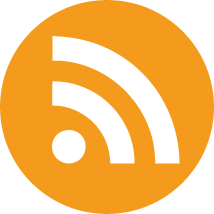 The Uniform Certified Public Accountant (CPA) Examination is developed by the AICPA with significant input and assistance by NASBA and state boards of accountancy. It is designed to assess the knowledge and skills entry-level CPAs need to practice public accountancy. Learn more about the organizations involved in the CPA license process.
The Uniform Certified Public Accountant (CPA) Examination is developed by the AICPA with significant input and assistance by NASBA and state boards of accountancy. It is designed to assess the knowledge and skills entry-level CPAs need to practice public accountancy. Learn more about the organizations involved in the CPA license process.
To earn your license, don’t forget the 4 E’s: education, experience, ethics and the Exam! To better understand the 4 E’s, watch the short video here. NOTE: The CPA license is the only license for accounting professionals and is issued by state boards of accountancy in the 55 jurisdictions (There is not a national CPA license). Read more about reasons to get a CPA license.
Build your professional experience. Today, licensure candidates need about 2,000 working hours verified by a licensed CPA, but check with your jurisdiction as requirements vary. Note, previously completed internships may count toward your 2,000-hour goal.
Understand the ethics. Ethical behavior is nonnegotiable, and honesty, objectivity and professional conduct are the foundation of the profession. Learn more about becoming an ethical leader from NASBA’s Center for the Public Trust.
Apply for the CPA Exam. To become a CPA, you must pass the Uniform CPA Examination® — the only licensing qualification for accounting and audit professionals in the United States. You can become licensed in any of the 55 jurisdictions. Learn more here.
Exam Details
All candidates must pass the Uniform CPA Examination (CPA Exam), a four-section, 16- hour assessment.
The CPA Exam consists of three four-hour Core sections and one four-hour Discipline section of your choice. The Core sections are Auditing and Attestation (AUD), Financial Accounting and Reporting (FAR), and Taxation and Regulation (REG). The Discipline sections are Business Analysis and Reporting (BAR), Information Systems and Control (ISC), and Tax Compliance and Planning (TCP).
History of the Uniform CPA Examination
In its nearly 100-year history, the Uniform CPA Examination has undergone many changes. Until the end of 2003, it was a paper-and-pencil exam administered twice each year. In April 2004, the computer-based CPA exam was launched and the paper-and-pencil exam was discontinued. The computer-based CPA exam achieved its one millionth administration in 2009.
Today the Uniform CPA Exam is a state-of-the-art licensure examination – technologically advanced and psychometrically sound.






